Are you planning your outfit for a kayaking trip and have suddenly run into the problem of what to wear on your feet?
Footwear is often the last thing on people’s minds when they’re picking out their kayaking gear.
While your PFD is the most critical item of clothing you’ll wear, it is also important to make sure that you are dressed to stay safe from head to toe.
The best shoes for kayaking will be the ones that keep you comfortable and protect your feet from common kayaking injuries.
This guide will walk you through the process of finding the right footwear for your planned activities and paddling environment.
- Should I Even Wear Shoes While Kayaking?
- Can You Kayak Barefoot?
- Can You Wear Crocs Kayaking?
- Can You Wear Sneakers Kayaking?
- Can You Wear Sandals Kayaking?
- How Do I Choose the Right Shoes for Kayaking?
- Should My Kayaking Footwear Be Waterproof?
- Should I Wear Socks In My Shoes When Kayaking?
- What Are the Best Shoes for Whitewater Kayaking?
- What Are the Best Shoes for Kayaking at the Lake?
- What Are the Best Shoes for Sea Kayaking?
- What Are the Best Shoes for Hot Weather?
- What Are the Best Shoes for Winter?
- Conclusion
- You Might Also Like…
Disclosure: this post contains affiliate links (clearly marked with ), which means we may earn a commission if you buy something through them, at no additional cost to you.
Should I Even Wear Shoes While Kayaking?
Watersports often require less clothing than you would wear for other activities, and freedom of movement is important for you to maneuver your kayak and swim as needed.
Some people are simply more comfortable going barefoot when they are around the water.
You don’t necessarily need shoes while kayaking, but it is recommended.
Wearing shoes gives you these benefits over going barefoot:
- avoid foot injuries from hazards in the water
- help your feet get a better grip on slippery surfaces
- enjoy easier transitions from the water to solid ground
- keep your feet warm in chilly conditions
- maintain better posture in your kayak
Can You Kayak Barefoot?
Kayaking barefoot is an option that some people choose for various reasons.
You might want to kick your shoes off to create a greater feeling of relaxation.
Some people might choose to go barefoot to protect an inflatable kayak from punctures that cause it to deflate.
Others might feel that wearing shoes is too bulky for their comfort in a smaller kayak.
The decision to go barefoot or not is yours to make alone, but it does come with some considerable risks.
The biggest risk that you will encounter while kayaking barefoot is coming into contact with things on the ground that can hurt your feet or cause you to get sick.
There are several known pathogens that exist in the sand along beaches.
You’ll need to walk along the shoreline at some point to launch your kayak and bring it back to your vehicle.
Going barefoot could leave you on the hook for catching diseases and parasites such as fungal infections and hookworm.
You might also find that kayaking without shoes leads to blisters.
Wet skin is more vulnerable to abrasions, and you can develop blisters on your heels if they rub against the kayak while you are in a sitting position for paddling.
Can You Wear Crocs Kayaking?
Crocs are a comfortable style of footwear that many people find to be beneficial for aquatic activities.
These shoes are quick-drying and have holes that allow the water to drain out so that they don’t weigh you down.
There are several different styles of Crocs, and the most popular type has a strap on the back that helps to keep the shoes on your feet.
The material that the shoes are made from allows them to float, which is helpful if they manage to come off and you need to retrieve them.
Can You Wear Sneakers Kayaking?
Wearing traditional sneakers might seem like an easy option for kayaking since you may already have a pair.
There are several potential problems that you might run into with wearing your street shoes in the water.
The most obvious problem with sneakers is that they get waterlogged easily.
Most sneakers are made from fabrics, such as canvas, that absorb water.
You might also find that your sneakers are cumbersome and make it harder to escape out of your kayak if you capsize.
The much better option is to wear casual water shoes that look like sneakers, which are designed to be used in water sports.
Can You Wear Sandals Kayaking?
Sandals are another common type of footwear that you’ll find people wearing at lakes and rivers.
The thing to watch out for with sandals is whether or not they are designed for outdoor use.
Dress sandals aren’t made to withstand getting wet, and they might be too flimsy for being much use for foot protection.
Water sandals are a great option for kayaking.
They tend to have less material covering the top of your foot, so the water drains easily out of the top and sides.
They come with different sole thicknesses, which you can choose from based upon the conditions that you think your feet might be exposed to.
If you want to wear sandals for kayaking, make sure that the straps do not rub your feet in ways that leave the skin raw.
You’ll also want to pick ones with thicker soles if you plan to walk in areas that might have glass or sharp rocks.
How Do I Choose the Right Shoes for Kayaking?
Before you go shoe shopping, it is best to think about the environment and potential risks that you will experience on the trip.
For example, you’ll need more foot coverage than a sandal provides if you will be kayaking in frigid conditions.
Asking yourself these questions can help you begin to think about which shoes will work best to fit your needs:
- What is the terrain like on the route from your vehicle to the water?
- Do you plan to do any swimming or hiking?
- What are the potential hazards you might face in the environment?
- Do you have tender feet or calloused ones from going barefoot frequently?
- What type of kayak do you use?
Should My Kayaking Footwear Be Waterproof?
Shoes for kayaking come in several different materials with varying levels of water resistance.
Waterproof shoes are recommended if you will be kayaking in cold conditions since they are the best option to keep your feet warm.
A pair of waterproof footwear might also be more desirable if you want to keep your feet as dry as possible.
This is ideal if you plan to hike during or after your trip and don’t want to change shoes. Keeping your feet dry prevents blisters if you need to walk very far.
When you are looking for waterproof shoes, you’ll need to check for specific features.
Neoprene is a material that is often used for kayaking gear since it is flexible enough to allow for more comfort but capable of keeping water away from your skin.
Some waterproof shoes also come with additional features to lock water out.
Look for ones with special fasteners at the top that keep water from trickling inside during choppy water conditions.
Should I Wear Socks In My Shoes When Kayaking?
Socks provide an additional layer of protection from the elements.
Winter kayakers rely on socks to help keep their feet warm if they have shoes that allow water inside.
A pair of thermal dry socks is also ideal for preventing skin chafing from watertight shoes.
What Are the Best Shoes for Whitewater Kayaking?
Whitewater kayaking requires shoes that stay on in rapid currents and waves.
You’ll be bouncing around in the kayak to some degree, which means that you need a good fit to keep your shoes from slipping around.
Wet shoes that are made from Neoprene are ideal for whitewater kayaking. These can be found in both low cut and ankle styles.
A low cut pair works well if you want to keep your legs as cool as possible in warm weather, and they provide for slightly more ease of movement.
High top styles keep more water away from your feet.
The right shoes for this type of kayaking should have soles that help you avoid falling on slippery rocks and that prevent you from injuries such as stone bruises.
What Are the Best Shoes for Kayaking at the Lake?
In the kayaking world, there’s the leisurely trip to the lake where you park near your launching zone and meander around on calm water.
Then, there is the serious hike through treacherous trails that might involve other activities such as fishing from a different location.
Your choice of shoes depends upon how wild you expect your adventure to get.
For a leisurely day trip to the lake in comfortable conditions, you can usually get by with water sandals, Crocs or normal wet shoes.
If you plan to do any serious hiking, then you might need to opt for something sturdier.
Kayaking boots have higher tops that can protect you from snake bites and other injuries that can occur in areas where your destination requires more exposure to nature.
What Are the Best Shoes for Sea Kayaking?
Sea kayaking shoes should be light enough that you can swim well in conditions with high waves and strong currents.
They might also need to stand up to rocky shores depending upon your destination. Most sea kayakers also prefer watertight shoes to protect their feet from cold water.
Form-fitting kayaking booties are a go-to choice for many kayakers.
These tend to be less bulky than other types of shoes, which works well for kayaks with limited space.
You can also look for types that are meant to be worn with a wet or dry suit.
Shoes for sea kayaking sometimes come with extra features such as straps to help keep them on in case you capsize or roll.
What Are the Best Shoes for Hot Weather?
Hot weather gives you a chance to let your feet breathe.
You will want to carefully toe the line between breathability and protecting your feet from the elements.
Sandals are great if you don’t plan to do anything more than a little kayaking and walking along sandy shorelines.
Sturdier water shoes are better if you plan to enjoy off-water excursions that involve lots of walking.
If you do need more foot protection than sandals provide, then look for styles that are made from mesh materials to keep your feet cool.
What Are the Best Shoes for Winter?
The winter season requires kayakers to take their choice of footwear more seriously since the wrong choice could lead to frostbite and hypothermia.
Layers still work best for keeping your feet warm, and you might need to wear both socks and waterproof shoes to avoid feeling the deep freeze of extremely cold environments.
Kayaking boots for winter are available in styles that go higher up your leg and cinch closed.
This helps protect your legs as you make your way to the water, and they’ll be less likely to leak water inside.
Conclusion
There is no one-size-fits-all answer to which shoes are best for kayaking.
While you’ll find a few brave souls out there going barefoot, most kayakers depend upon their shoes to keep their feet warm and free from injuries.
Start picking out shoes with the temperature and type of kayaking trip that you have planned in mind.
Then, make sure to wear them in a bit before you go on your journey.
Giving your kayaking shoes a trial run ensures that you’ll start your adventure off on the right foot.
You Might Also Like…
-
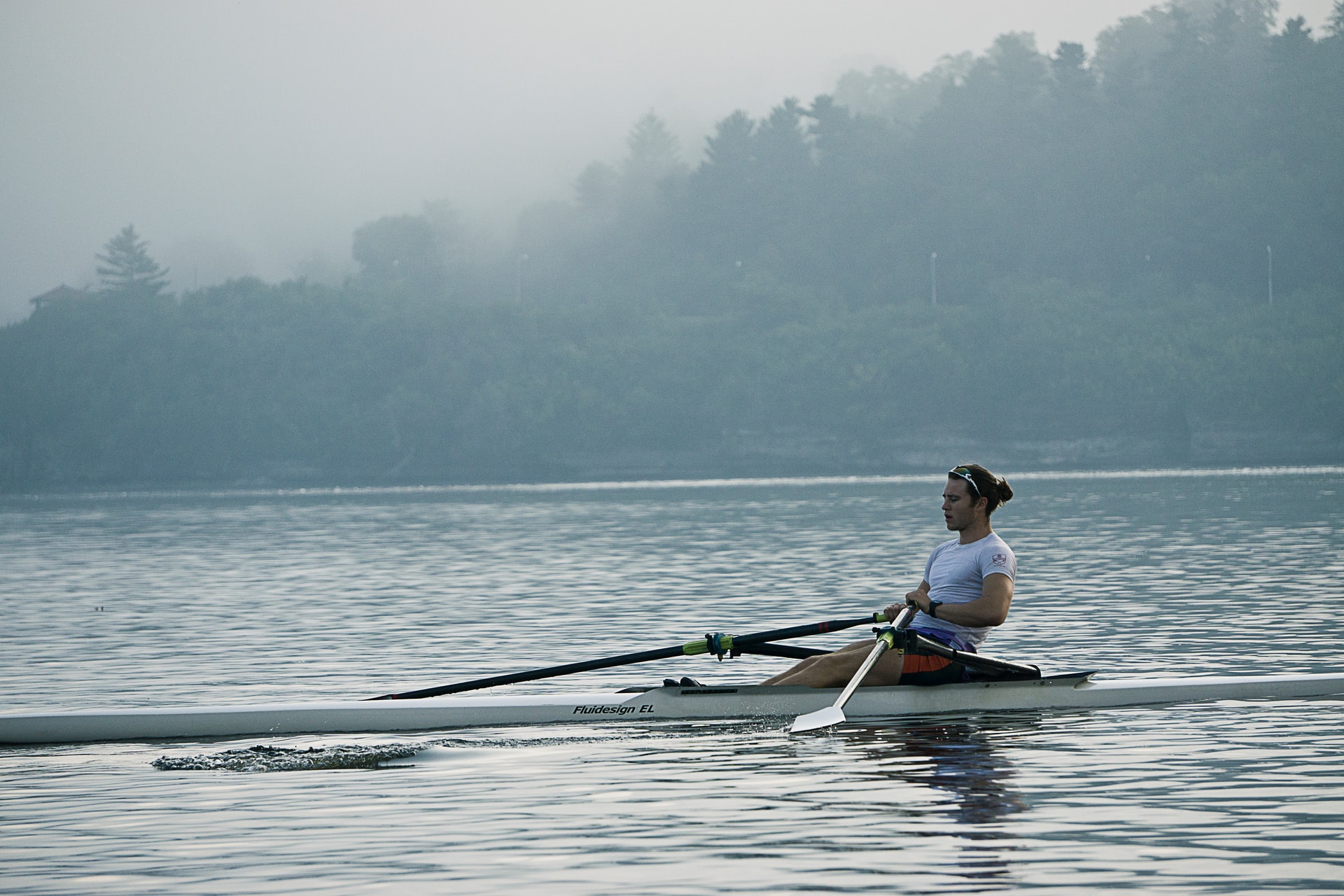
Kayaking Vs. Rowing: What’s the Difference? (8 Key Differences)
-
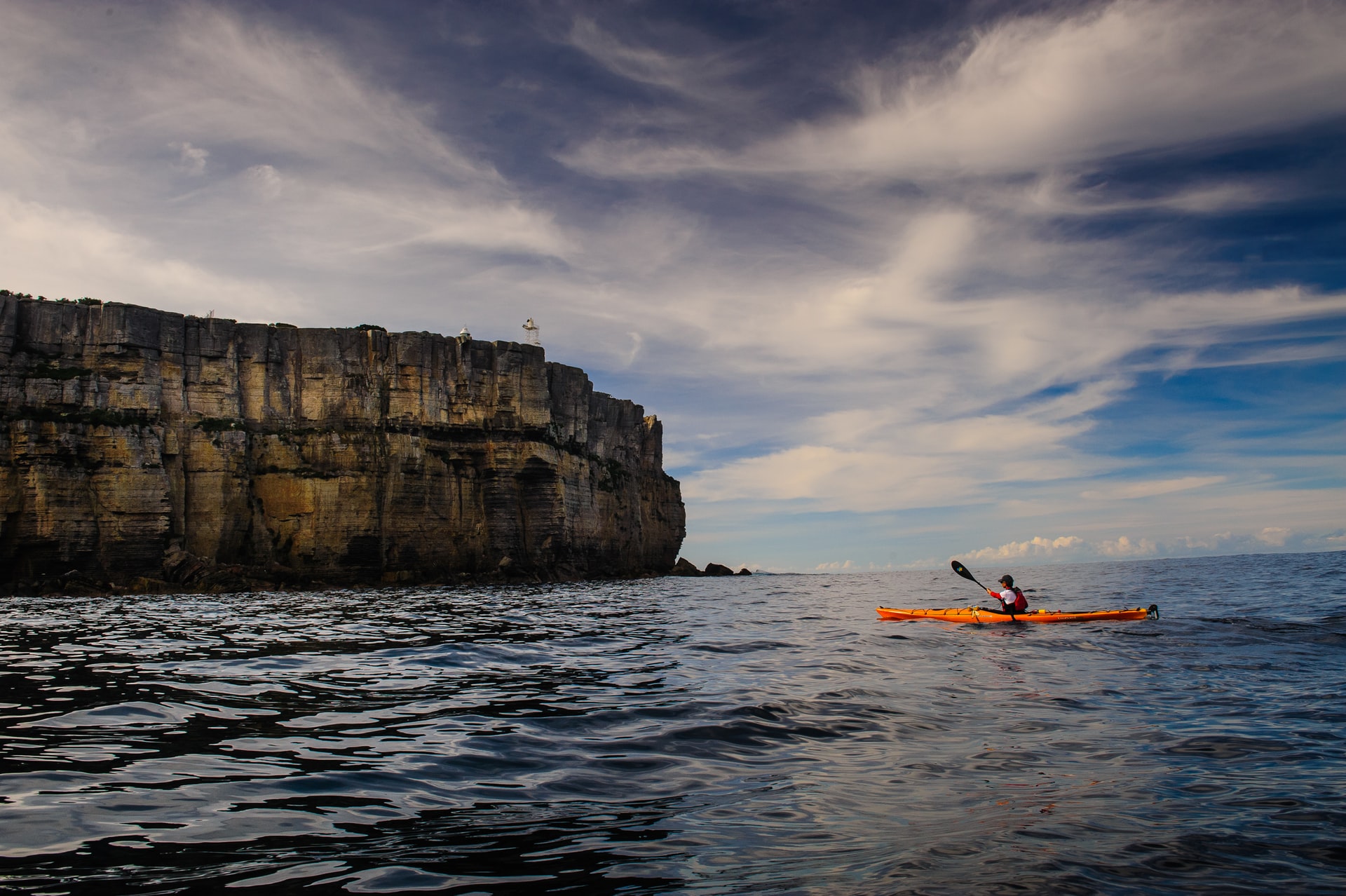
When Is It Too Windy for Kayaking? (Crucial Facts You Should Know)
-
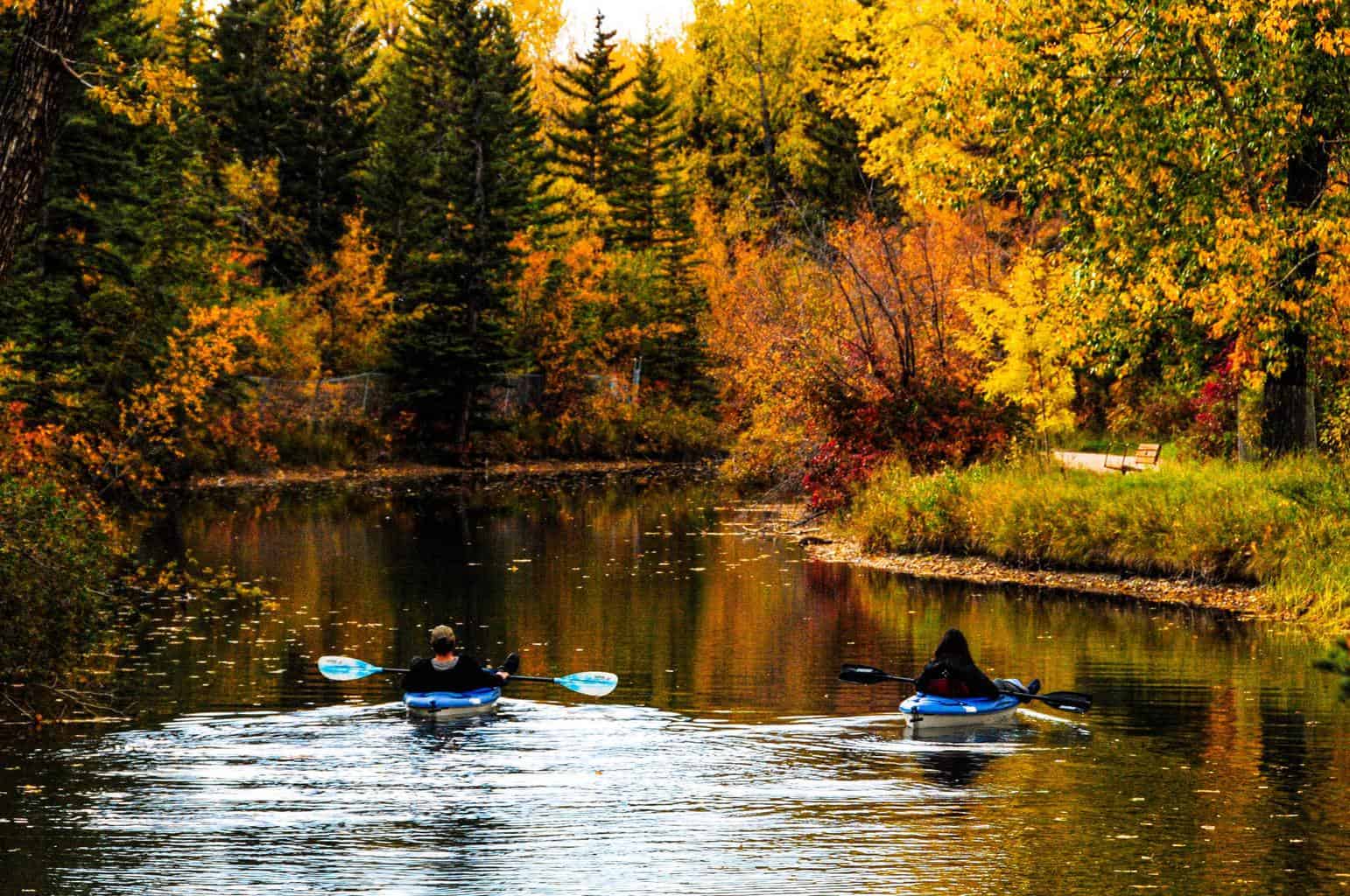
When to Go Kayaking? (What Every Kayaker Should Know)
-
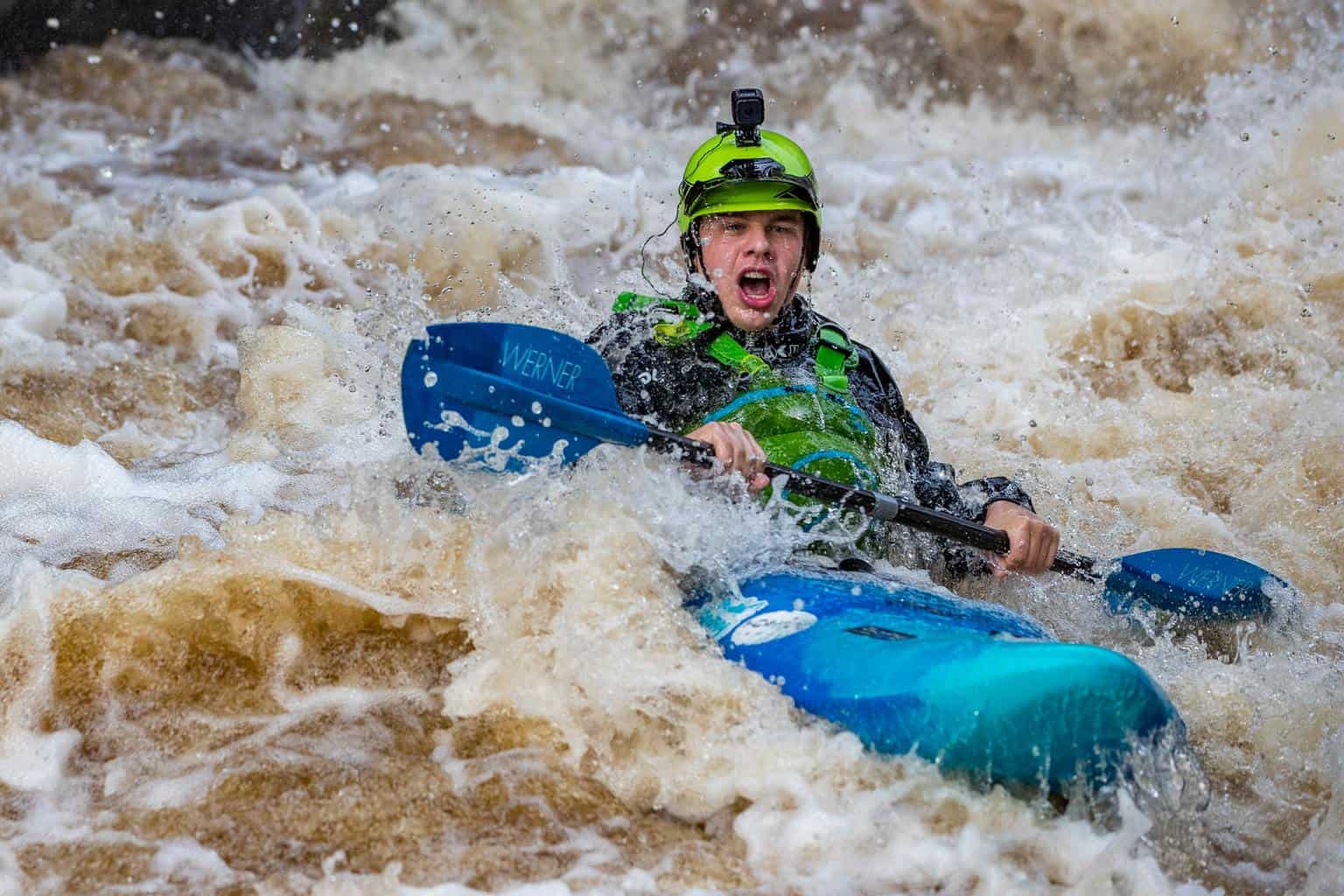
Will I Get Wet Kayaking? (Common Reasons & How to Stay Dry)
-
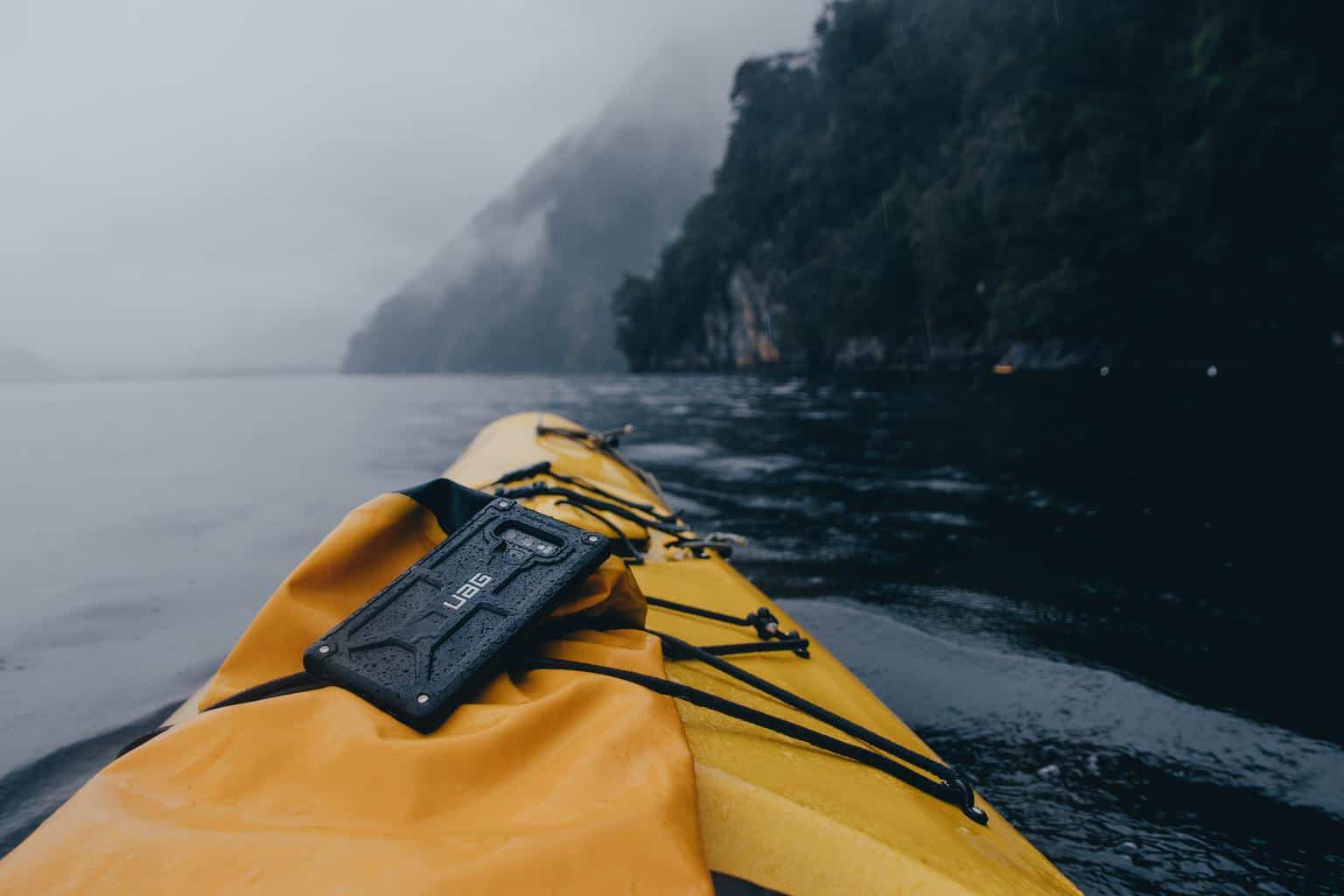
Should I Bring My Phone Kayaking? (7 Good Reasons)
-
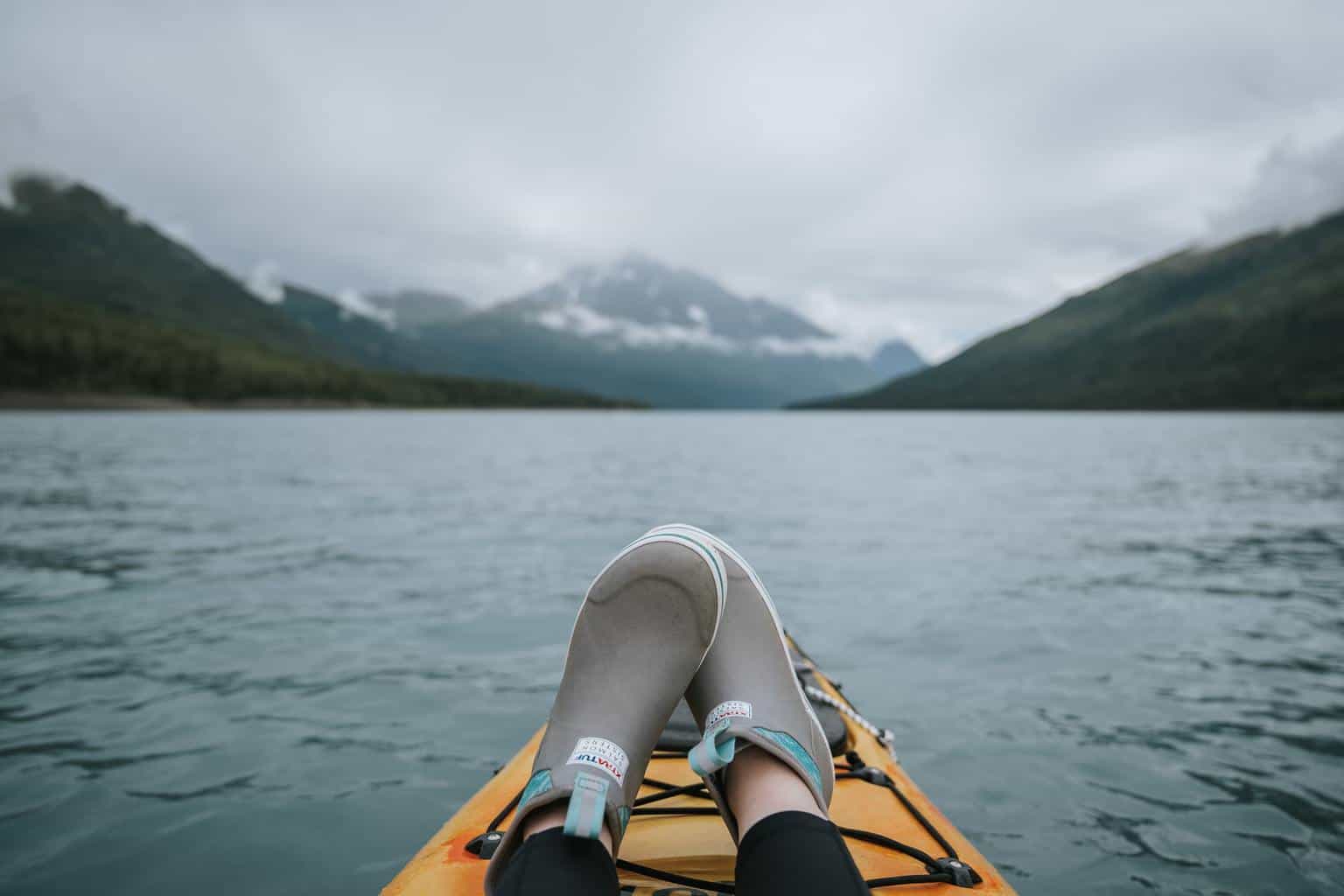
What Shoes to Wear Kayaking? (+ the Best Shoes for Your Needs)
-
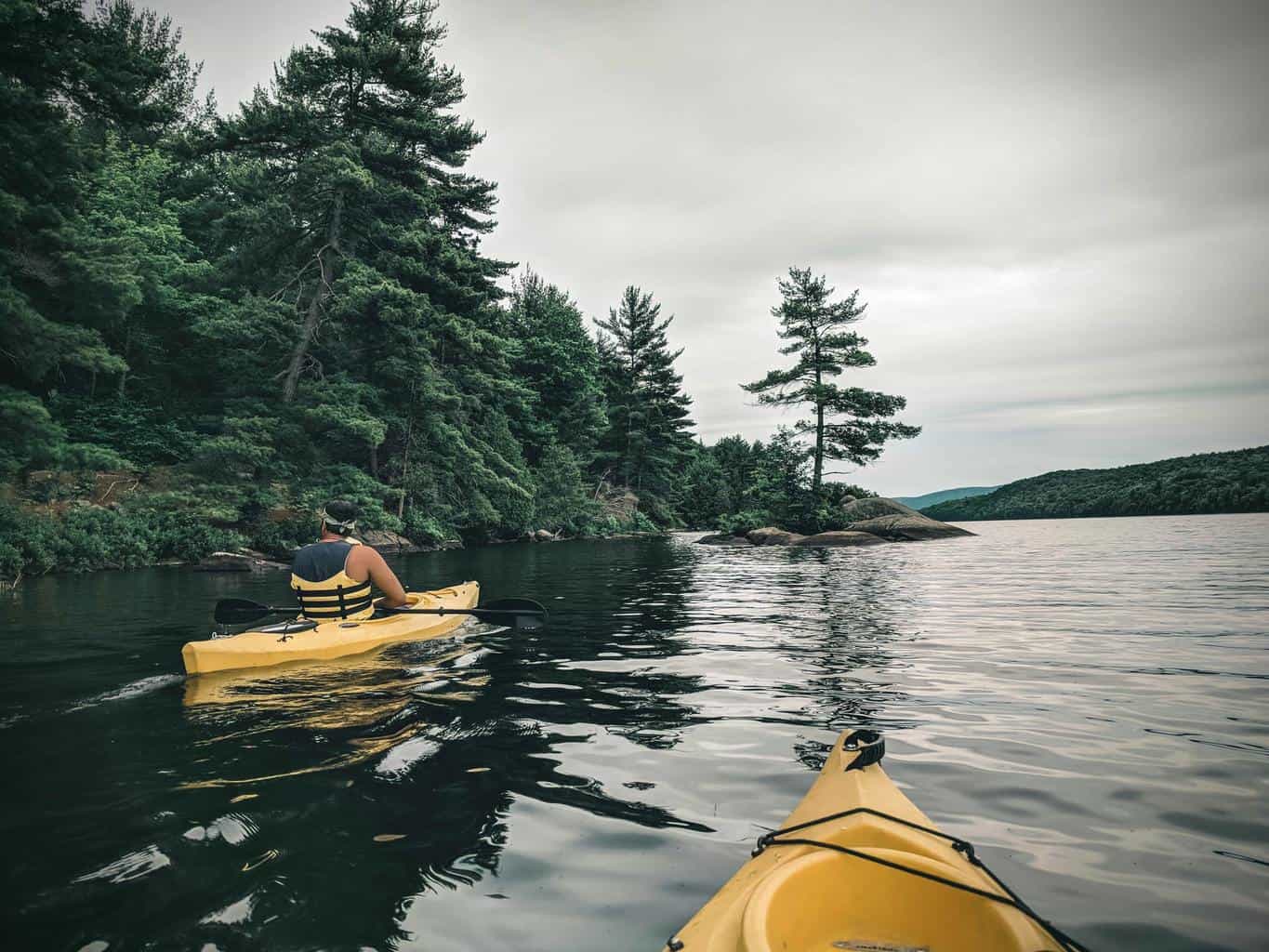
Can Kayaking Cause Chest Pain? (What Every Kayaker Should Know)
-
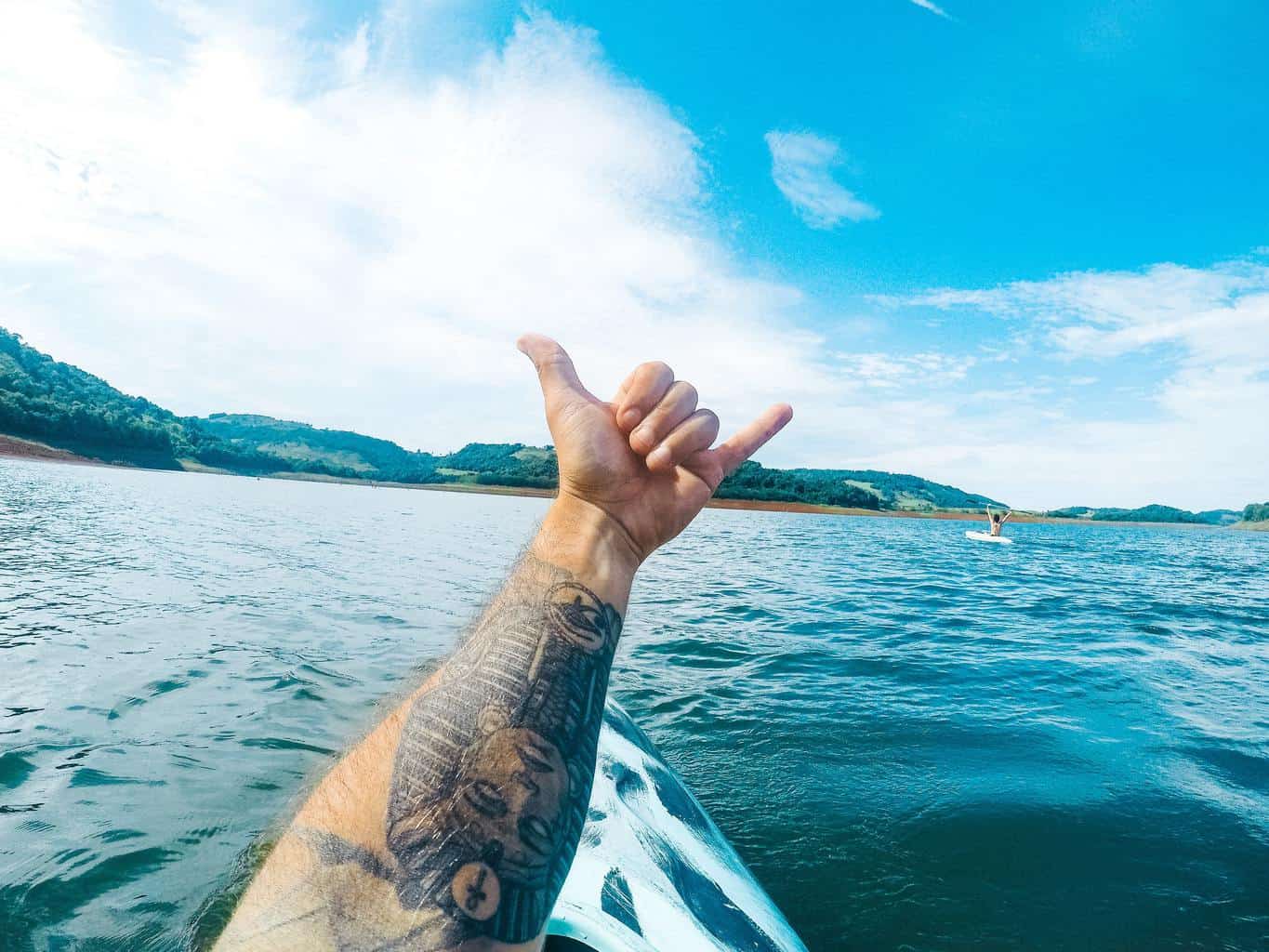
Can I Go Kayaking With a New Tattoo? (Facts You Should Know)
-
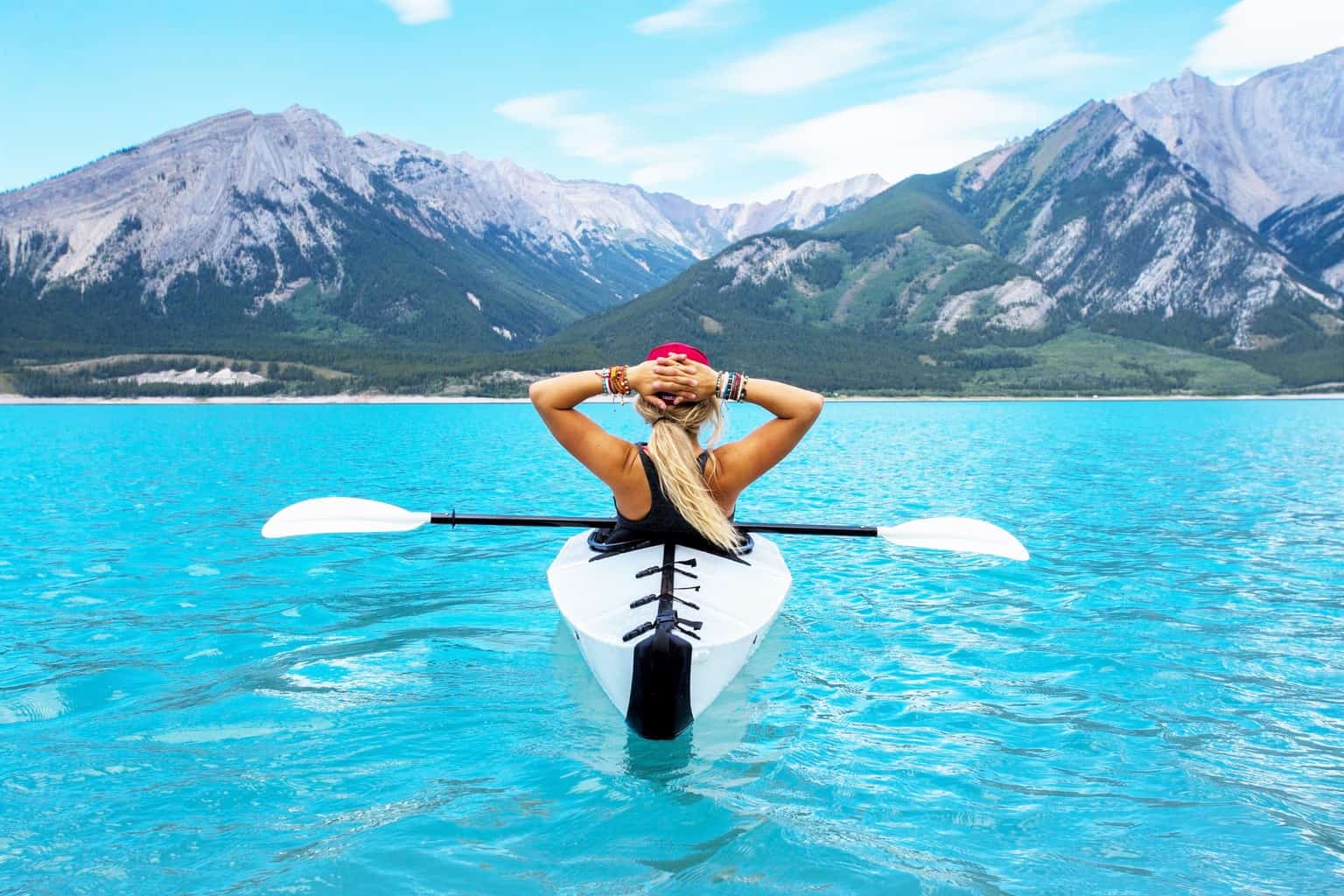
Can You Go Kayaking On Your Period? (+Practical Tips)
-
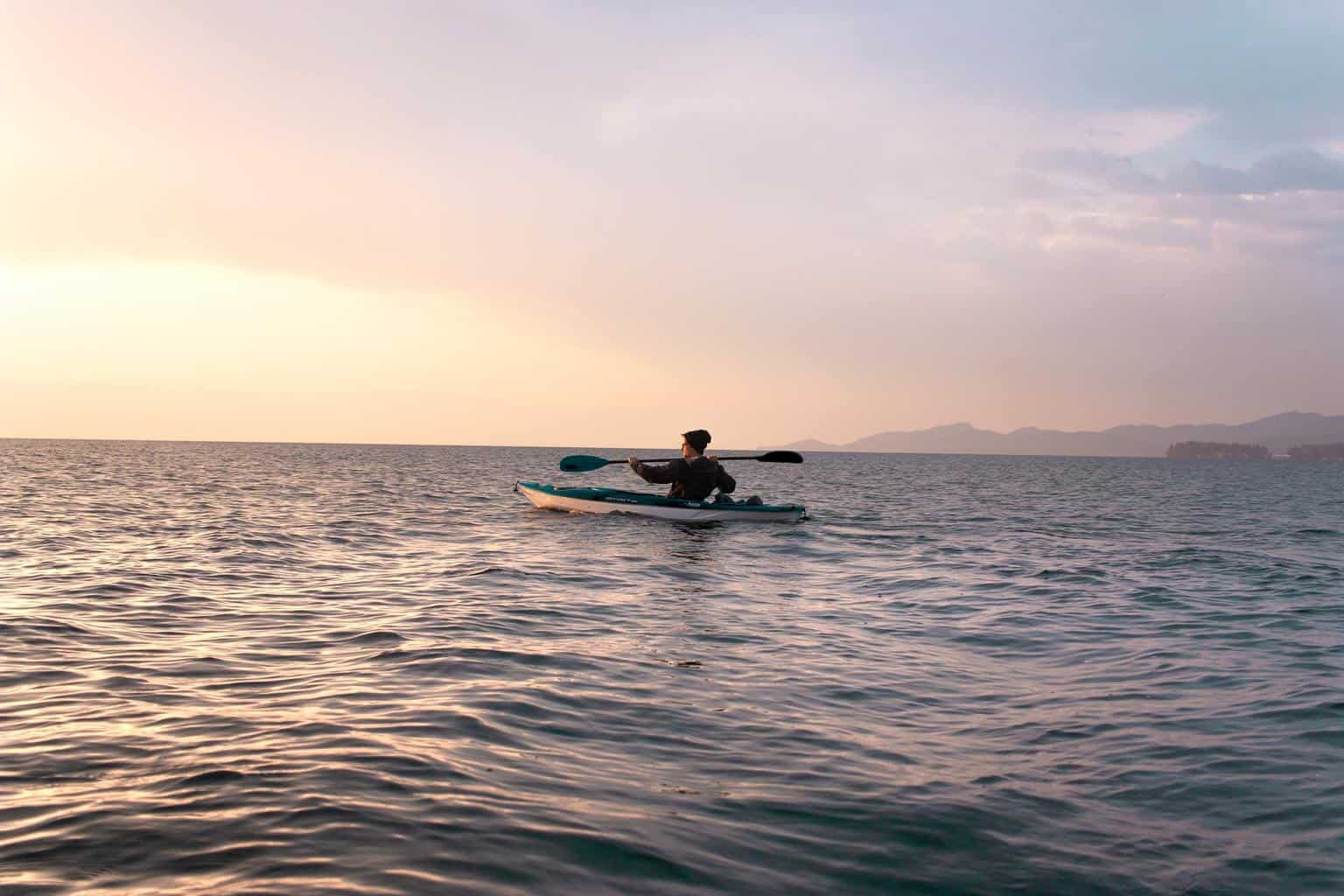
Can Kayaking Cause Hemorrhoids? (What Every Kayaker Should Know)
-
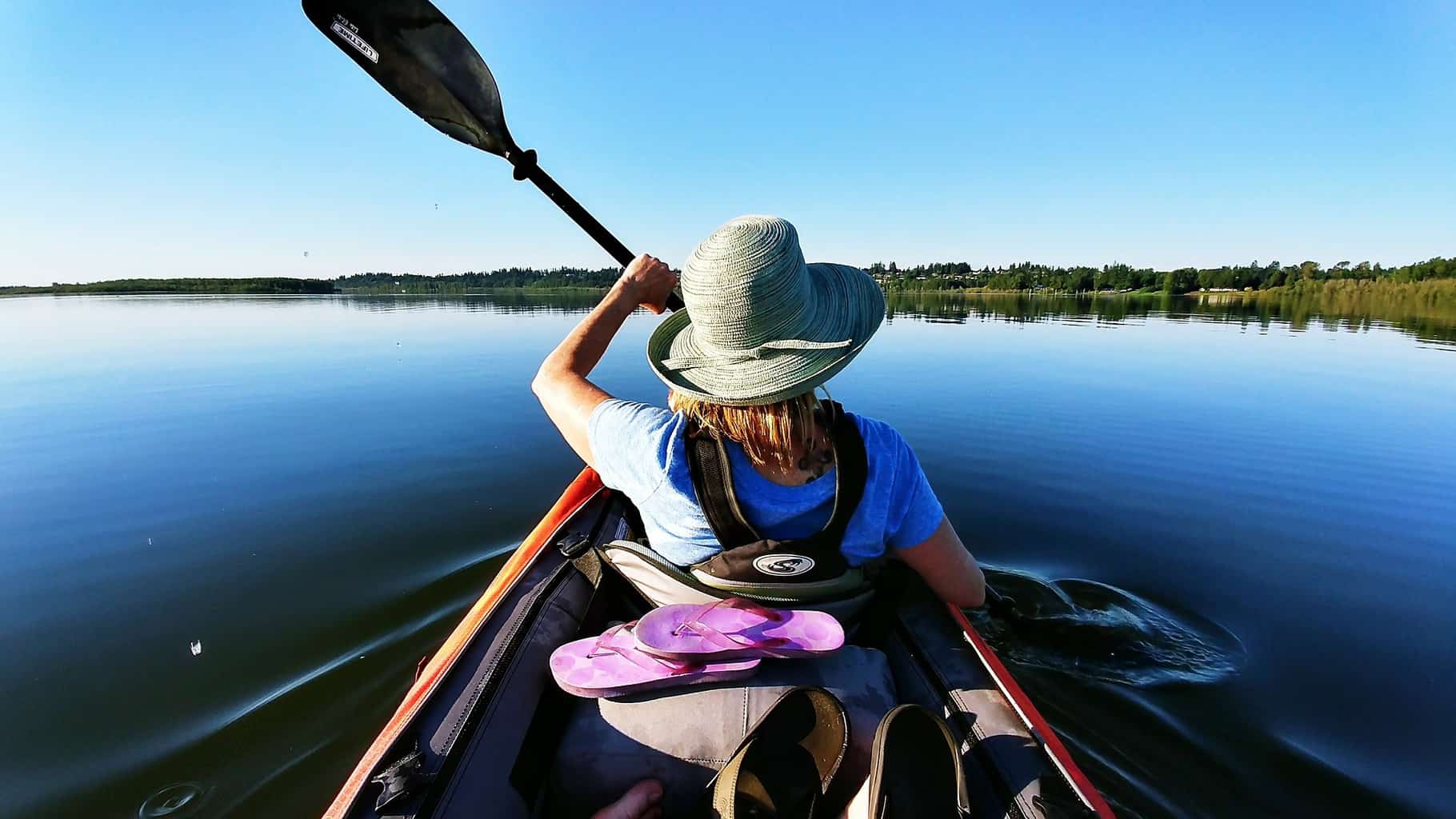
Can Kayaking Cause Tennis Elbow? (+8 Simple Tips to Avoid It)
-
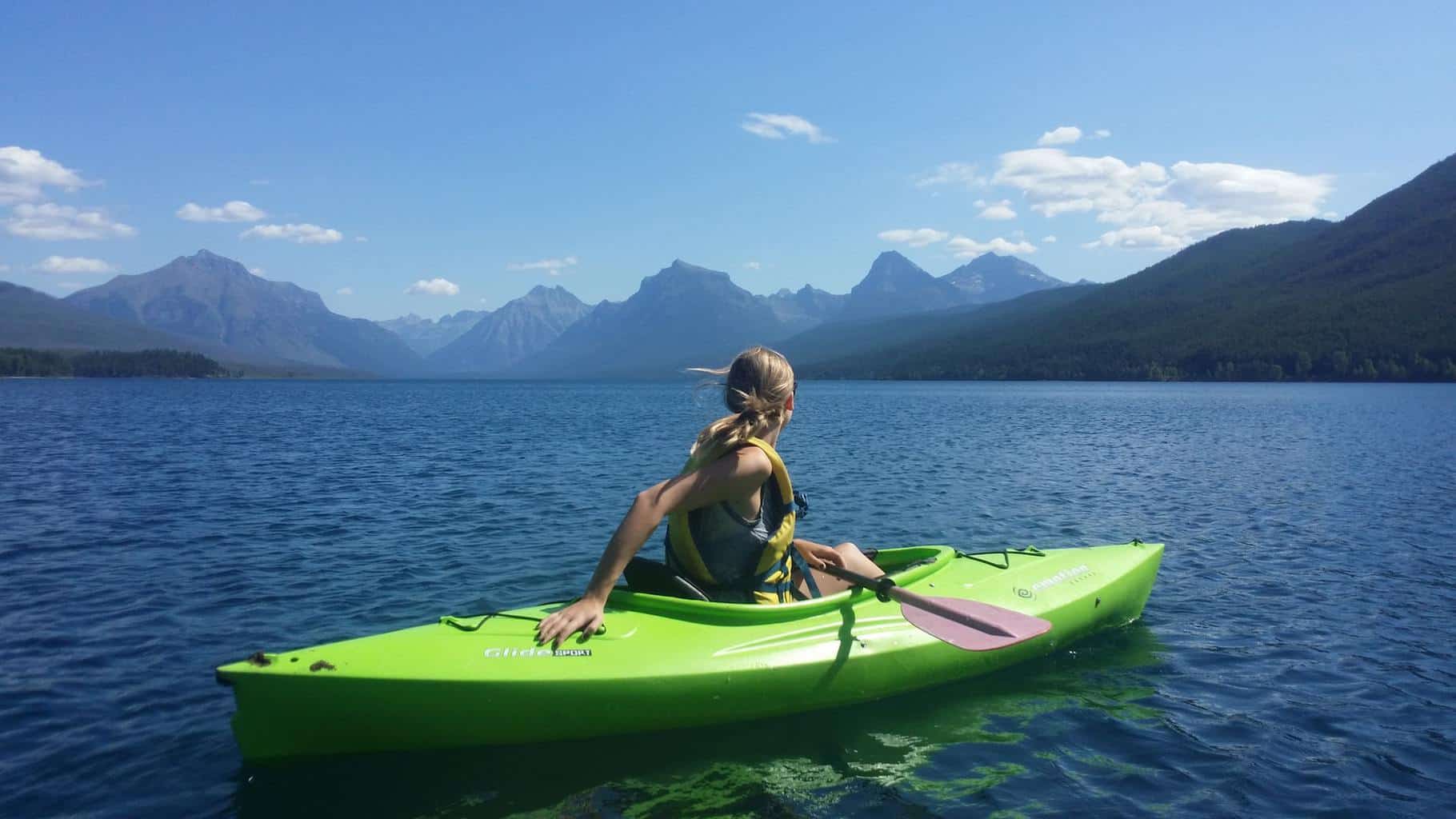
Can Kayaking Cause Sciatica? (+7 Tips to Avoid It)











